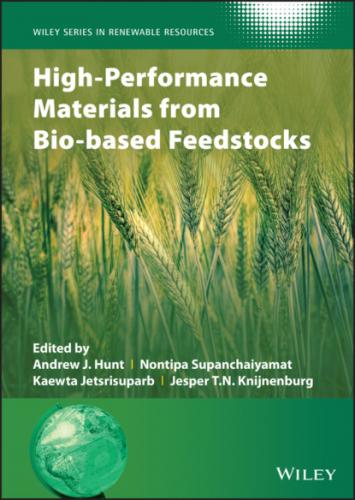Other than carbohydrates, raw biomass has been used as a possible feedstock for the production of hydrothermal carbon. The irregular shape and agglomerated particles of the hydrothermal carbon from biomass were observed [144, 145]. Its abundance of oxygen, especially in the form of ketonic groups, was similar to the hydrothermal carbon prepared from carbohydrate feedstocks. The appearance of several functional groups on the hydrothermal carbon confirmed that the hemicellulosic polysaccharide in biomass was destroyed by the hydrothermal treatment. However, its stability and reactivity in biomass conversion into chemicals were distinctly different from the monosaccharide‐derived hydrothermal carbon due to the difference in the hydrothermal carbon formation mechanism. The hydrothermal pathways of glucose feedstock were mostly via glucose dehydration to HMF, condensation, and aromatization. Whereas for the biomass feedstock, there are probably two reaction pathways: (1) partially by biomass hydrolysis, glucose dehydration, condensation, and aromatization, and (2) partially by direct biomass condensation and aromatization. The higher stability and aromaticity in the hydrothermal carbon from biomass was ascribed to the direct reaction pathways [144].
2.5.5 Sugar‐Derived Carbon Catalysts
Recently, sugars such as D‐glucose, sucrose, and cellulose have been reported as promising carbon sources for the preparation of catalysts or catalyst supports through various biomass conversion pathways [146]. A solid acid catalyst synthesized from sugar, also known as a sugar catalyst, was shown to be stable and active in many reactions. In particular, a sulfonated carbon‐based solid acid catalyst had outstanding physical properties and was very active in both esterification and hydrolysis reactions. The formation of water‐soluble saccharides could be achieved via the hydrolysis of microcrystalline cellulose (see Figure 2.10) using the sugar‐derived sulfonated solid catalyst. Despite its relatively low surface area of approximately 2 m2 g−1, the obtained sulfonated solid catalyst was capable of producing soluble saccharides consisting of 64% β‐1,4‐glucan and 4% glucose even at a low reaction temperature of 100 °C. Its intrinsic adsorption proficiency to attach the β‐1,4‐glucan on the surface likely prompted the catalytic activity, an ability that other solid acid catalysts did not possess. Meanwhile, typical solid acid catalysts, for instance, Amberlyst‐15, H‐mordenite, Nafion, and niobic acid were inactive for this reaction [146].
Figure 2.10 Hydrolysis of cellulose.
Aside from the hydrolysis reaction, a sugar‐derived solid catalyst was found to have potential in biodiesel production by esterification. The D‐glucose‐derived sugar acid catalyst was compared with conventional solid catalysts (sulfated zirconia, Amberlyst‐15, and niobic acid) for its effectiveness to esterify a short‐chain aliphatic alcohol with palmitic acid and oleic acid [147]. The sugar‐derived acid catalyst presented superb thermal stability and the highest activity among other acid catalysts, and its activity was almost the same as a homogeneous acid catalyst. To contribute to the cost‐competition, the sugar catalyst was used in biodiesel production from waste oil with high free fatty acid content (27.8%). It showed prominent performances in the reactivity with a yield of higher than 90%, in spite of the oil containing high amounts of free fatty acids.
2.5.6 Carbon Nanotubes from Biomass
CNTs, which are a 3D‐structured material, have recently been developed for their application in catalysis due to the promising physical and chemical properties. Several kinds of carbon‐rich biomasses and bio‐resource residues were used as feedstock in the production of biomass‐derived CNTs. Yao et al. utilized a biomass residue from the liquor industry to produce CNTs by activation and carbonization to receive an activated carbon followed by thermal condensation [148]. The activated carbon was reacted with dicyandiamide and Ni metal precursor and subsequently annealed at 700, 800, or 900 °C to embed the Ni nanoparticles in the N‐doped CNTs supported on porous carbon (Ni‐CNTs‐C). The growth of CNTs on the surface of the porous carbon support was promoted by the increasing annealing temperature. The bamboo‐like structure of CNTs annealed at 700 °C had a diameter of approximately 10–15 nm and a length of 100–300 nm. Conversely, the surface area was decreased from 558 to 283 m2 g−1 when the annealing temperature was raised from 700 to 900 °C. The Ni‐CNTs‐C annealed at 700 °C revealed the highest catalytic activity with ~98.2% removal of organic dye (Orange II) within 90 minutes because its largest surface area provided more active sites. The dye removal percentage was reduced to 96.9 and 68.5% with annealing at 800 and 900 °C, respectively. Leaching and agglomeration of Ni0 and CNTs were shielded by the carbon layer leading to high stability and activity of these catalysts in acidic media. The activity of the reused catalyst, however, decreased from 98.2 to 64.2% after five cycles. The great number of CNTs presented both a high number of active sites and promoted electron transfer on the carbon surface. The Ni‐CNTs‐C catalyst was also tested for its performance in the conversion of harmful Cr(VI) to less toxic Cr(III). Among catalysts tested, the catalyst annealed at 800 °C (Ni‐CNTs‐C‐800) showed the highest activity and could completely reduce Cr(VI) to Cr(III) in 160 minutes as observed from the change in color from yellow to colorless [148].
The HTC of biomass including sugar, cellulose, and crude plants yields many intermediate products of liquid alkanes such as 5‐hydroxymethyl‐2‐furaldehyde, furfural, 5‐methylfurfural and 1,2,4‐benezenetriol. When these intermediates have the appropriate concentration of oxygenated functional groups, they could self‐transform into various structures of carbonaceous materials through various conversion pathways, i.e. dehydration, aromatization, and polymerization. The occurring carbonaceous particles could attach to the CNT matrix, and repeatedly bind layer‐by‐layer to obtain oxygenated functional groups anchored to the CNTs. The resulting material is suitable both as a direct catalyst and as support for metal catalysts as it contained numerous reactive functional groups. The metal immobilized on the functionalized CNT catalyst presented both high activity and selectivity for the hydrogenation of unsaturated aldehyde to unsaturated alcohol with 90% selectivity at a conversion of 55% [149].
2.5.7 Graphene and Its Derivatives
Graphene, a member of the graphite family, is a flat monolayer of carbon atoms arranged into a 2D honeycomb structure. Graphene and graphene‐based materials (e.g. graphene oxides) have been extensively
